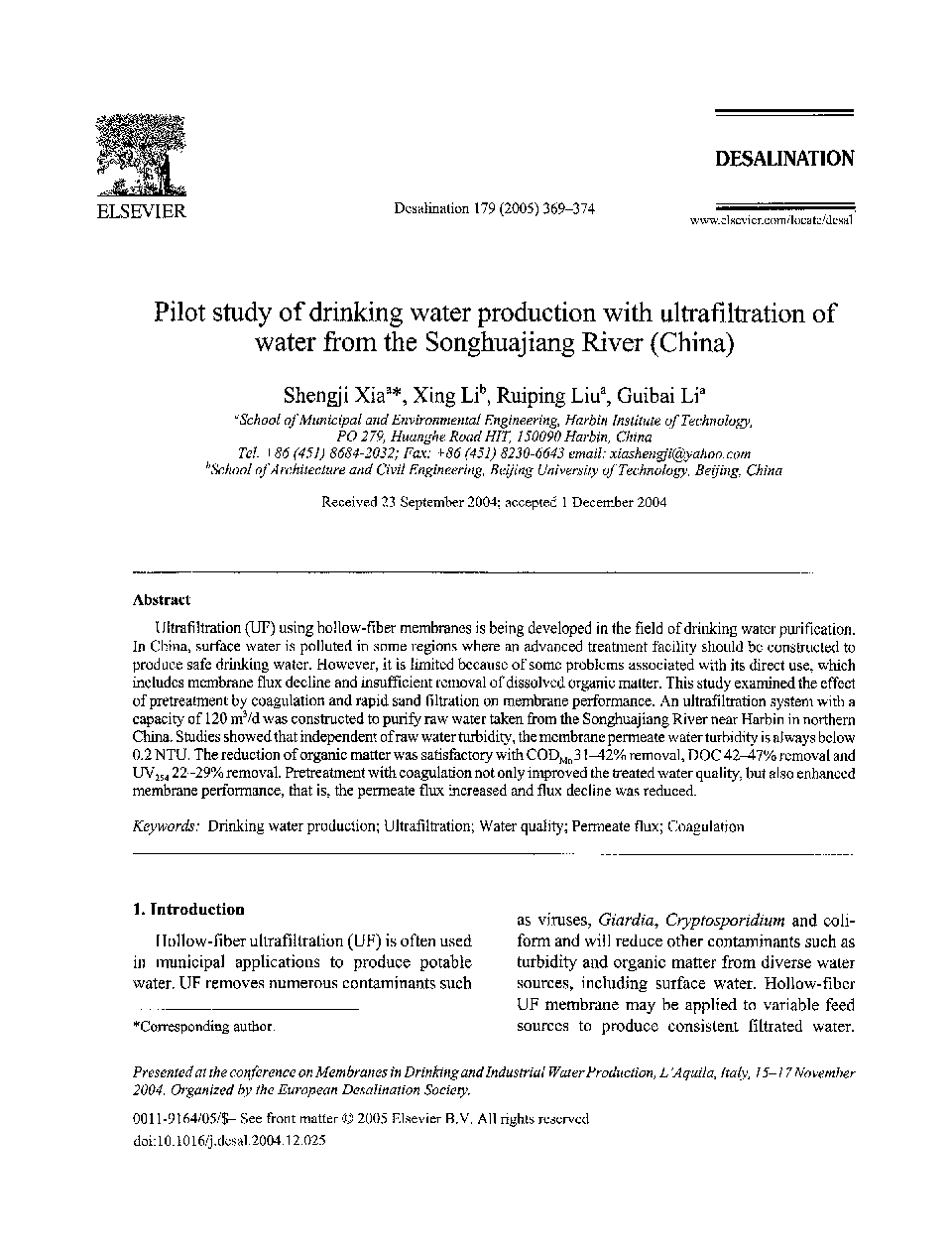| Article ID | Journal | Published Year | Pages | File Type |
|---|---|---|---|---|
| 9681121 | Desalination | 2005 | 6 Pages |
Abstract
Ultrafiltration (UF) using hollow-fiber membranes is being developed in the field of drinking water purification. In China, surface water is polluted in some regions where an advanced treatment facility should be constructed to produce safe drinking water. However, it is limited because of some problems associated with its direct use, which includes membrane flux decline and insufficient removal of dissolved organic matter. This study examined the effect of pretreatment by coagulation and rapid sand filtration on membrane performance. An ultrafiltration system with a capacity of 120 m3/d was constructed to purify raw water taken from the Songhuajiang River near Harbin in northern China. Studies showed that independent of raw water turbidity, the membrane permeate water turbidity is always below 0.2 NTU. The reduction of organic matter was satisfactory with CODMn 31-42% removal, DOC 42-47% removal and UV254 22-29% removal. Pretreatment with coagulation not only improved the treated water quality, but also enhanced membrane performance, that is, the permeate flux increased and flux decline was reduced.
Related Topics
Physical Sciences and Engineering
Chemical Engineering
Filtration and Separation
Authors
Shengji Xia, Xing Li, Ruiping Liu, Guibai Li,
